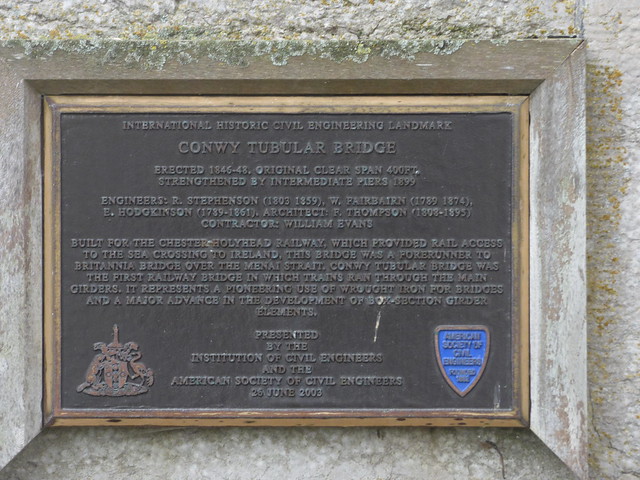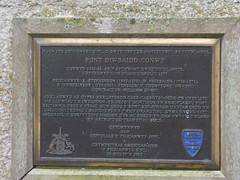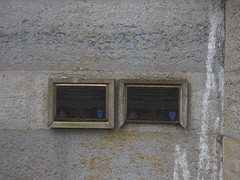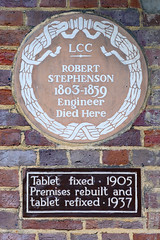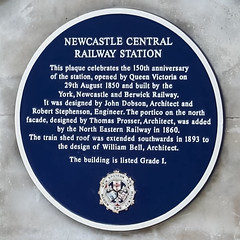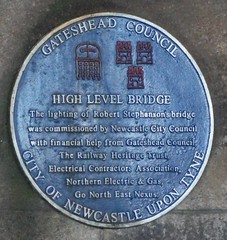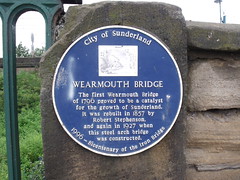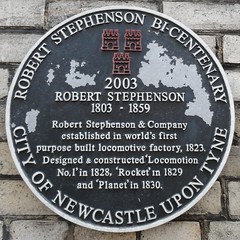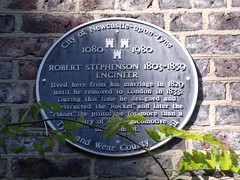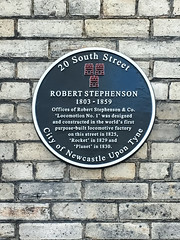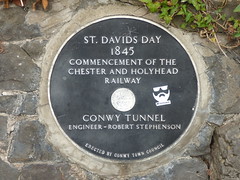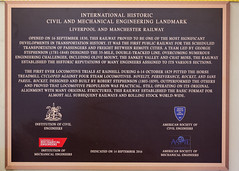Nodwedd Peirianneg Sipil o Bwysigrwydd Hanesyddol Rhyngwladol Pont Diwbaidd Conwy Codwyd 1846-48. Prif rychwant gwreiddiol 400TR. Cryfhawyd gan bileri canolig 1899. Peirianwyr: R. Stephenson (1803-1859), W. Fairbairn (1789-1874), E. Hodgekinson (1789-1861). Pensaer: F. Thompson (1808-1895). Contractor: William Evans. Adeiladwyd ar gyfer rheilffordd Caer-Caergybi oedd yn Cysylltu a'r llongau i'r iwerddon, yr oedd y bont hon yn rhagflabnu Pont Britannia dros y fenal hon oedd y bont reilffordd gyntg oedd yn galluogi trenau I basio o fewn y prif drawstiau. Dyma enghraifft arloesol o ddefnyddio haern oyr ac roedd yn gam pwysig ymlaen yn natblygaid trawstiau bogs. International Historic Civil Engineering Landmark Conwy Tubular Bridge Erected 1846-48. Original clear span 400ft. Strengthened by intermediate piers 1899 Engineers: R. Stephenson (1803-1859), W. Fairbairn (1789-1874), E. Hodgkinson (1789-1861). Architect: F. Thompson (1808-1895) contractor: John Evans. Built for the Chester-Holyhead railway, which provided rail access to the sea crossing to Ireland, this bridge was a forerunner to Robert Stephenson’s Britannia bridge over the Menai Strait. Conwy Tubular Bridge was the first railway bridge in which trains ran through the main girders. It represents a pioneering use of wrought iron for bridges and a major advance in the development of box-section girder elements.
by Institution of Civil Engineers and American Society of Civil Engineers on 26 June 2003
Colour: black
Wikimedia:
Flickr:
Google Streetview
OpenStreetMap

